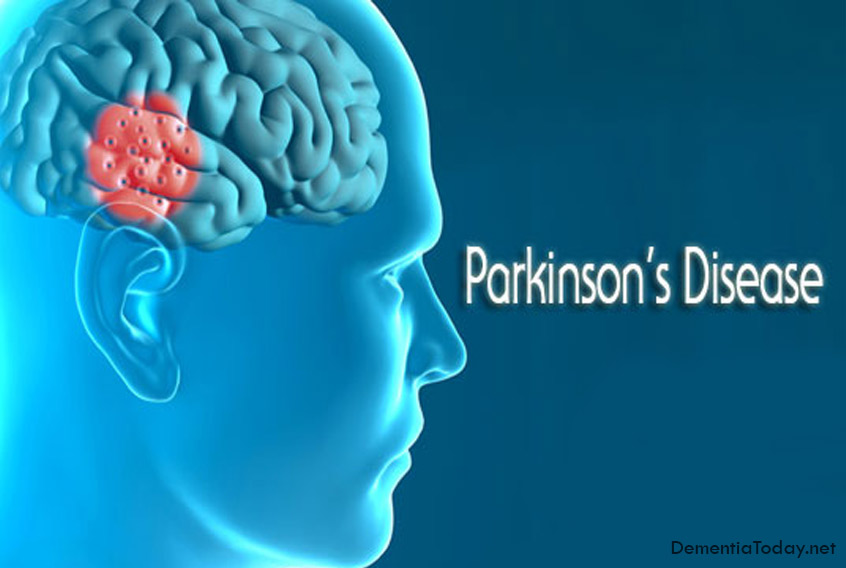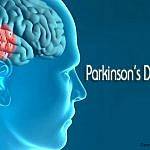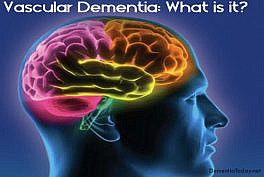Team Unravels Central Mystery of Alzheimer’s

Scientists at The Scripps Research Institute (TSRI) have shed light on one of the major toxic mechanisms of Alzheimer’s disease. The discoveries could lead to a much better understanding of the Alzheimer’s process and how to prevent it.
The findings, reported in the April 10, 2013 issue of the journal Neuron, show that brain damage in Alzheimer’s disease is linked to the overactivation of an enzyme called AMPK. When the scientists blocked this enzyme in mouse models of the disease, neurons were protected from loss of synapses- neuron-to-neuron connection points- typical of the early phase of Alzheimer’s disease.
“These findings open up many new avenues of investigation, including the possibility of developing therapies that target the upstream mechanisms leading to AMPK overactivation in the brain,” said TSRI Professor Franck Polleux, who led the new study.
Alzheimer’s disease, a fatal neurodegenerative disorder afflicting more than 25 million people worldwide, currently has no cure or even disease-delaying therapy.
In addition to having implications for Alzheimer’s drug discovery, Polleux noted the findings suggest the need for further safety studies on an existing drug, metformin. Metformin, a popular treatment for Type 2 Diabetes, causes AMPK activation.
Tantalizing Clues to Alzheimer’s
Researchers have known for years that people in the earliest stages of Alzheimer’s disease begin to lose synapses in certain memory-related brain areas. Small aggregates of the protein amyloid beta can cause this loss of synapses, but how they do so has been a mystery.
Until recently, Polleux’s laboratory has been focused not on Alzheimer’s research but on the normal development and growth of neurons. In 2011, he and his colleagues reported that AMPK overactivation by metformin, among other compounds, in animal models impaired the ability of neurons to grow output stalks, or axons.
These disruptions cause nerve cells in the brain to stop working, lose connections with other nerve cells, and finally die. The destruction and death of nerve cells causes the memory failure, personality changes, problems in carrying out daily activities, and other features of the disease.
The brains of people with AD have an abundance of two abnormal structures – amyloid plaques and neurofibrillary tangles – that are made of
misfolded proteins.
This is especially true in certain regions of the brain that are important in memory.
The third main feature of AD is the loss of connections between cells. This leads to diminished cell function and cell death
Around the same time, separate research groups found clues that AMPK might also have a role in Alzheimer’s disease. One group reported that AMPK can be activated in neurons by amyloid beta, which in turn can cause a modification of the protein tau in a process known as phosphorylation. Tangles of tau with multiple phosphorylations (“hyperphosphorylated” tau) are known to accumulate in neurons in affected brain areas in Alzheimer’s. These results, published two years ago, reported abnormally high levels of activated AMPK in these tangle-ridden neurons.
Polleux decided to investigate further, to determine whether the reported interactions of AMPK with amyloid beta and tau can in fact cause the damage seen in the brains of Alzheimer’s patients. “Very little was known about the function of this AMPK pathway in neurons, and we happened to have all the tools needed to study it,” he said.
The Mystery of Alzheimer’s
When searching for Alzheimer’s some doctors will carry out a physical exam, take blood and urine samples, order a brain scan, or carry out memory or psychological tests to see how well the brain is working. There is no specific test for identifying Alzheimer’s. You should take the person you suspect has Alzheimer’s to the doctor when memory seems to be affecting their entire life. You may notice they struggle doing daily things. But remember people’s memories do deplete as they get older so if their memory does not seem to be affecting their daily lives they should be just fine. When the doctors carry out physical exams they will be asking about diet, nutrition, and use of alcohol. They will want medical history. The test may also include taking blood pressure and taking a temperature.
In Search of Answers
Georges Mairet-Coello, a postdoctoral research associate in the Polleux lab, performed most of the experiments for the new study. He began by confirming that amyloid beta, in the small-aggregate (“oligomer”) form that is toxic to synapses, does indeed strongly activate AMPK; amyloid beta oligomers stimulate certain neuronal receptors, which in turn causes an influx of calcium ions into the neurons. He found that this calcium influx triggers the activation of an enzyme called CAMKK2, which appears to be the main activator of AMPK in neurons.
The team then showed that this AMPK overactivation in neurons is the essential reason for amyloid beta’s synapse-harming effect. Normally, the addition of amyloid beta oligomers to a culture of neurons causes the swift disappearance of many of the neurons’ dendritic spines- the rootlike, synapse-bearing input stalks that receive signals from other neurons. With a variety of tests, the scientists showed that amyloid beta oligomers can’t cause this dendritic spine loss unless AMPK overactivation occurs- and indeed AMPK overactivation on its own can cause the spine loss.
Stages of Alzheimer’s
Stage 1: They act normal. No signs of any forms of dementia.
Stage 2: Very mild decline in memory. The person may have some memory lapses. They may forget familiar words or locations as well as some everyday objects. But still no signs that could be diagnosed.
Stage 3: Mild decline and can sometimes be detected. Friends or family may notice changes. Doctors may notice memory or concentration problems like coming up with words, trouble remembering names, having problems doing tasks at work, losing or misplacing valuable objects, or increased problems with planning or organizing.
Stage 4: Mild moderate severe decline is the mid-stage of Alzheimer’s. At this stage thorough medical interviews should take place and be diagnosed as some form of dementia. Some symptoms are forgetfulness of recent events, impaired ability to do simple math questions, difficulty planning, forgetfulness of one’s history and personal information, and becoming moody or withdrawn from people.
Stage 5: Moderate severe decline which is called the moderate mid-stage of Alzheimer’s. Gaps in memory or thinking are obvious and the person may need help doing daily tasks. Some signs are they won’t be able to remember personal information, confusion with time and dates, having issues with numbers and math, need help choosing proper clothing for weather or occasions, yet don’t need help with eating or bathing, and they remember some significant details about them and their family.
Stage 6: Severe decline and it is still mid-stage of Alzheimer’s. Memory will continue to worsen and at this stage they might lose awareness of recent experiences as well as their surroundings, difficulty remembering their own name, trouble remembering unfamiliar and familiar people, needs help dressing properly, experience major changes in sleep patterns, have trouble controlling when to get rid of waste from the body, experience major personality changes, and they may wander and get lost.
Stage 7: Very severe decline in Alzheimer’s, this is the late stage in Alzheimer’s. In the final stage of Alzheimer’s people may lose the ability to carry on a conversation and participate in daily life. They may still be able to say some words or phrases. At this stage people will need help with everything from eating, to getting rid of waste, to cleaning themselves, or sitting up on their own. They may lose the ability to smile and their reflexes become abnormal and muscles become rigid.
For a key experiment the team used J20 mice, which are genetically engineered to overproduce mutant amyloid beta, and eventually develop an Alzheimer’s-like condition. “When J20 mice are only three months old, they already show a strong decrease in dendritic spine density, in a set of memory-related neurons that are also affected early in human Alzheimer’s,” Mairet-Coello said. “But when we blocked the activity of CAMKK2 or AMPK in these neurons, we completely prevented the spine loss.”
{pagebreak}
Next Mairet-Coello investigated the role of the tau protein. Ordinarily it serves as a structural element in neuronal axons, but in Alzheimer’s it somehow becomes hyperphosphorylated and drifts into other neuronal areas, including dendrites where its presence is associated with spine loss. Recent studies have shown that amyloid beta’s toxicity to dendritic spines depends largely on the presence of tau, but just how the two Alzheimer’s proteins interact has been unclear.
The team took a cue from a 2004 study of Drosophila fruit flies, in which an AMPK-like enzyme’s phosphorylation of specific sites on the tau protein led to a cascade of further phosphorylations and the degeneration of nerve cells. The scientists confirmed that one of these sites, S262, is indeed phosphorylated by AMPK. They then showed that this specific phosphorylation of tau accounts to a significant extent for amyloid beta’s synapse toxicity. “Blocking the phosphorylation at S262, by using a mutant form of tau that can’t be phosphorylated at that site, prevented amyloid beta’s toxic effect on spine density,” Mairet-Coello said.
The Mystery of Alzheimer’s Disease
Amyloid plaques, neurofibrillary tangles, synaptic loss, and cell death are the most striking features of the Alzheimer’s brain when it is viewed under the microscope after death.
At first, the Alzheimer’s disease typically destroys neurons and their connections in parts of the brain involved in memory, including the entorhinal cortex and the hippocampus.
Later on, Alzheimer’s affects areas in the cerebral cortex responsible for language, reasoning, and social behavior.
Eventually, other areas of the brain are damaged, and a person with Alzheimer’s can become helpless and unresponsive to the outside world.
The disease of Alzheimer’s is the most common form of dementia. People affected by this disease will first appear to be forgetful but as the time passes it will become much more serious making it difficult for victims to understand language, recognize family members, and even remembering their own identity. Other symptoms include hallucinations, change in sleeping patterns, loss of ability to recognize danger, becoming easily agitated, and even withdrawing from social contact. After much research on Alzheimer’s disease, the causes of this tragic disease that affects 1 in every 85 people still remains unknown. There are various complex hypotheses attempting to explain why so many people are affected by Alzheimer’s but the only certainty is that the disease is associated with plaques and tangles in the brain. There is no cure for Alzheimer’s but there is treatment in order to manage the symptoms. Treatment includes: drugs, which attempt to reduce the rate at which symptoms worsen, supplements such as vitamin B12 and vitamin E, which are said to slow down or prevent Alzheimer’s if used early enough, and changing of the home environment in order to make daily activities much easier to perform. There is no proven way to prevent Alzheimer’s but some suggestions to incorporate into a daily routine if your family has a history of the disease include maintaining a normal blood pressure, consuming a low-fat diet, and keeping an active social and mental lifestyle.
The result suggests that amyloid beta contributes to Alzheimer’s via AMPK, mostly as an enabler of tau’s toxicity.
More Studies Ahead
Mairet-Coello, Polleux and their colleagues are now following up with further experiments to determine what other toxic processes, such as excessive autophagy, are promoted by AMPK overactivation and might also contribute to the long-term aspects of Alzheimer’s disease progression. They are also interested in the long-term effects of blocking AMPK overactivation in the J20 mouse model as well as in other mouse models of Alzheimer’s disease, which normally develop cognitive deficits at later stages. “We already have contacts within the pharmaceuticals industry who are potentially interested in targeting either CAMKK2 or AMPK,” says Polleux.
The other contributors to the study, “The CAMKK2-AMPK kinase pathway mediates the synaptotoxic effects of amyloid beta oligomers through tau phosphorylation,” were Julien Courchet, Simon Pieraut, Virginie Courchet and Anton Maximov, all of TSRI.
The three abnormalities most evident in the brains of people who have died with the disorder are:
Amyloid plaques. Found in the spaces between neurons, plaques consist predominantly of abnormal deposits of a protein fragment called beta-amyloid. Beta-amyloid is formed from the breakdown of a larger protein called amyloid precursor protein (APP). Beta-amyloid comes in several different molecular forms. One of these, beta-amyloid 42, has a strong tendency to clump together. When produced in excess, beta-amyloid 42 accumulates into plaques. Scientists used to think that amyloid plaques were the primary cause of the damage to neurons seen in Alzheimer’s. Now, however, many think that unclumped forms of beta-amyloid, seen earlier in the plaque formation process, may be the major culprits. Scientists have not yet determined if plaques are a cause or a byproduct of Alzheimer’s disease.
Neurofibrillary tangles. Found inside neurons, neurofibrillary tangles are abnormal clumps of a protein called tau. Healthy neurons are internally supported in part by structures called microtubules, which help guide nutrients and molecules from the cell body to the axon and dendrites. Researchers believe that tau normally binds to and stabilizes microtubules. In Alzheimer’s disease, however, tau undergoes abnormal chemical changes that cause it to detach from microtubules and stick to other tau molecules, forming threads that eventually clump together to form tangles. The tangles disrupt the microtubule network and create blocks in the neuron’s transport system. Abnormal tau may also cause blocks in synaptic signaling. As with beta-amyloid, some scientists think that other, smaller forms of abnormal tau may cause the most damage to neurons.
Loss of neuronal connections and cell death. In Alzheimer’s disease, the synaptic connections between certain groups of neurons stop functioning and begin to degenerate. This degeneration may be due to the abnormal deposits of beta-amyloid and tau. When neurons lose their connections, they cannot function properly and eventually die. As neuronal injury and death spread through the brain, connections between networks of neurons break down, and affected regions begin to shrink in a process called brain atrophy. By the final stage of Alzheimer’s, damage is widespread, and brain tissue has shrunk significantly.
The study was supported in part by the National Institutes of Health (RO1 AG031524) and by Novartis (ADI program).
About The Scripps Research Institute
The Scripps Research Institute (TSRI) is one of the world’s largest independent, not-for-profit organizations focusing on research in the biomedical sciences. TSRI is internationally recognized for its contributions to science and health, including its role in laying the foundation for new treatments for cancer, rheumatoid arthritis, hemophilia, and other diseases. An institution that evolved from the Scripps Metabolic Clinic founded by philanthropist Ellen Browning Scripps in 1924, the institute now employs about 3,000 people on its campuses in La Jolla, CA, and Jupiter, FL, where its renowned scientists- including three Nobel laureates- work toward their next discoveries. The institute’s graduate program, which awards PhD degrees in biology and chemistry, ranks among the top ten of its kind in the nation.
###
Source Newsroom: Scripps Research Institute






